Loading AI tools
Commune in north-central France From Wikipedia, the free encyclopedia
Tonnerre (French pronunciation: [tɔnɛʁ] ) is a commune in the Yonne department in Bourgogne-Franche-Comté in north-central France.
Tonnerre | |
|---|---|
 The town hall | |
| Coordinates: 47°51′20″N 3°58′27″E | |
| Country | France |
| Region | Bourgogne-Franche-Comté |
| Department | Yonne |
| Arrondissement | Avallon |
| Canton | Tonnerrois |
| Government | |
| • Mayor (2020–2026) | Cédric Clech[1] |
| Area 1 | 58.27 km2 (22.50 sq mi) |
| Population (2021)[2] | 4,301 |
| • Density | 74/km2 (190/sq mi) |
| Time zone | UTC+01:00 (CET) |
| • Summer (DST) | UTC+02:00 (CEST) |
| INSEE/Postal code | 89418 /89700 |
| Elevation | 129–323 m (423–1,060 ft) |
| Website | www |
| 1 French Land Register data, which excludes lakes, ponds, glaciers > 1 km2 (0.386 sq mi or 247 acres) and river estuaries. | |
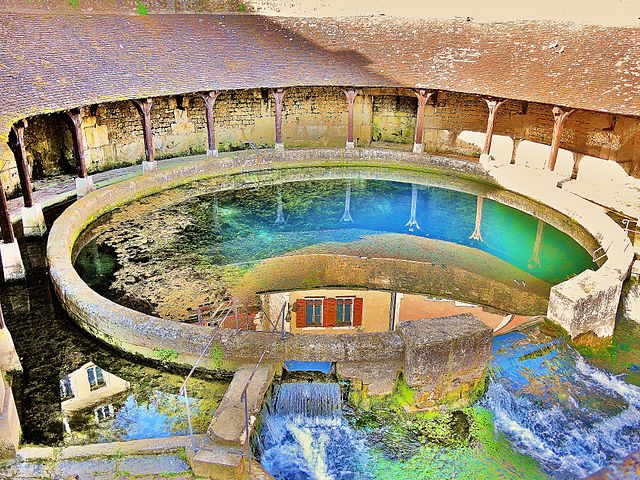
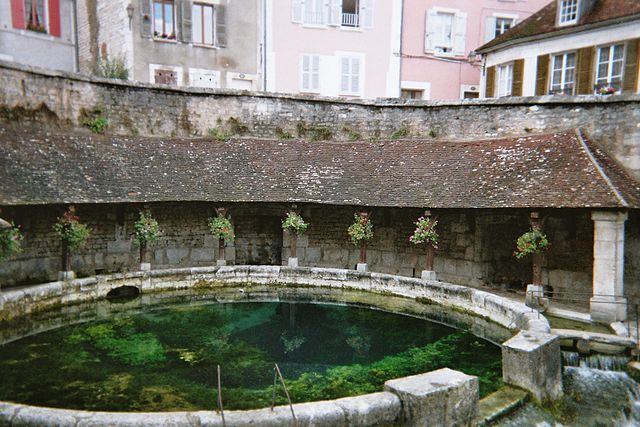
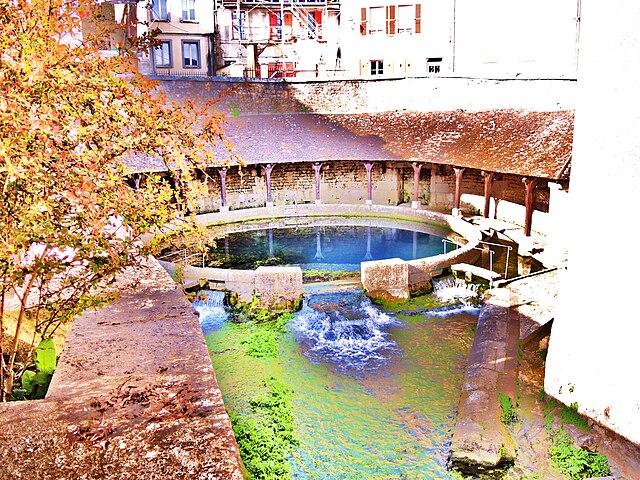
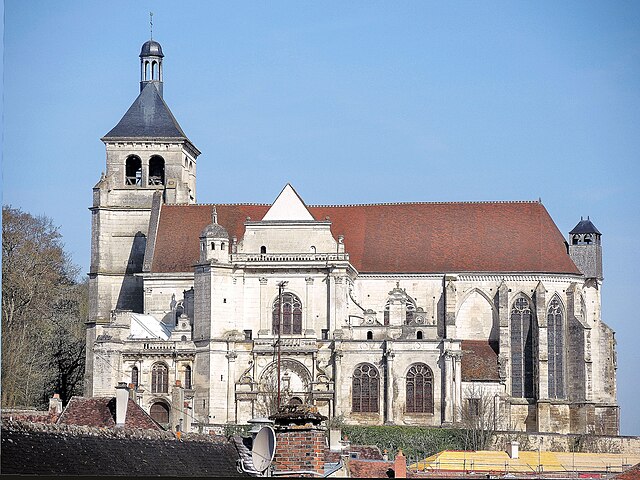


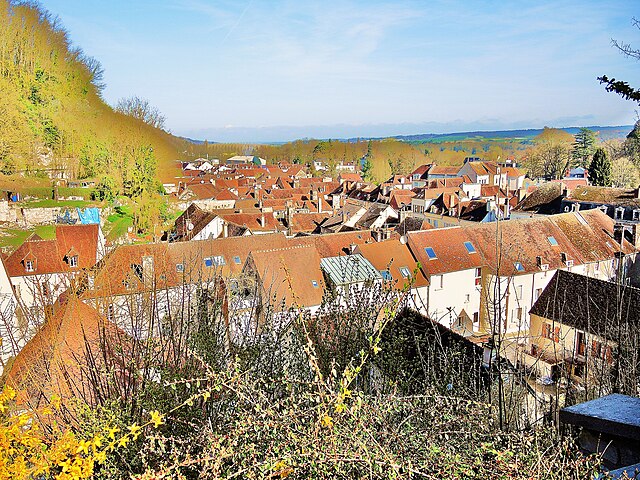
Straddling the Canal de Bourgogne, the commune is situated at the following crossroads:
| Climate data for Tonnerre (1991–2020 averages) | |||||||||||||
|---|---|---|---|---|---|---|---|---|---|---|---|---|---|
| Month | Jan | Feb | Mar | Apr | May | Jun | Jul | Aug | Sep | Oct | Nov | Dec | Year |
| Record high °C (°F) | 16.4 (61.5) |
21.0 (69.8) |
26.4 (79.5) |
28.7 (83.7) |
33.1 (91.6) |
38.1 (100.6) |
41.2 (106.2) |
39.7 (103.5) |
35.5 (95.9) |
31.1 (88.0) |
23.8 (74.8) |
18.4 (65.1) |
41.2 (106.2) |
| Mean daily maximum °C (°F) | 6.5 (43.7) |
8.1 (46.6) |
12.3 (54.1) |
17.0 (62.6) |
19.8 (67.6) |
23.9 (75.0) |
26.4 (79.5) |
25.6 (78.1) |
22.0 (71.6) |
17.0 (62.6) |
10.9 (51.6) |
7.2 (45.0) |
16.4 (61.5) |
| Mean daily minimum °C (°F) | 1.0 (33.8) |
0.8 (33.4) |
2.5 (36.5) |
5.4 (41.7) |
8.8 (47.8) |
12.2 (54.0) |
14.1 (57.4) |
13.4 (56.1) |
10.4 (50.7) |
8.1 (46.6) |
4.4 (39.9) |
1.6 (34.9) |
6.9 (44.4) |
| Record low °C (°F) | −13.0 (8.6) |
−14.0 (6.8) |
−14.0 (6.8) |
−4.4 (24.1) |
−0.6 (30.9) |
4.1 (39.4) |
6.3 (43.3) |
4.3 (39.7) |
1.7 (35.1) |
−3.9 (25.0) |
−5.3 (22.5) |
−16.6 (2.1) |
−16.6 (2.1) |
| Average precipitation mm (inches) | 58.8 (2.31) |
53.5 (2.11) |
58.5 (2.30) |
49.8 (1.96) |
80.6 (3.17) |
67.6 (2.66) |
47.1 (1.85) |
65.1 (2.56) |
53.1 (2.09) |
73.7 (2.90) |
61.7 (2.43) |
73.4 (2.89) |
742.9 (29.25) |
| Average precipitation days | 11.9 | 11.0 | 10.9 | 8.3 | 11.1 | 8.8 | 7.6 | 8.3 | 7.5 | 9.9 | 11.5 | 12.5 | 119.3 |
| Source: Météo France[3][4] | |||||||||||||
During the Roman era, Tonnerre was known as Tornodurum, which was derived from the Lingone word for "fortress". It was the capital of Pagus Tornodorensis. Here, in the valley of the Armançon, the County of Tonnerre was created, which served as a point of passage between Paris and Dijon, during a time when the King of France had designs on the Duchy of Burgundy.
Three etymologies of Tonnerre are rooted in the Celtic era: it is derived from Torn, an obscure local deity; others claim it is from Douros, meaning fortress; yet others say it is connected to a place near the torrent. It is equally likely that the three solutions are one:
In 2005, research at a place called Les Petits Ovis revealed that the site was occupied by a necropolis dating to the end of the Bronze Age. At a place called Terre de Vauplaine burials and cremations from the Bronze Age to the Iron Age have been found.
An oppidum dating to the La Tène period developed on the high part of the City of Tonnerre. Later, a rural Roman Gaul settlement was built whose boundaries are not well-established.
During this period many tanneries appeared along the banks of the Armançon or near the Fosse Dionne.
Tonnerre was the seat of a County starting in the 10th century. They administered the western edge of the vast bishopric of Langres. Several members of this family rose to rule this bishopric. Its seat may have been in the Bar-sur-Seine area. The counts, known by the charters of the Abbey of Saint-Michel, bear the name Miles. Succession in the 11th century was more chaotic.
A viscount of Tonnerre appeared at the beginning of this century. Under the law, this meant that the owner of the county had rights to other land as well, which imposes the establishment of a viscount (the same problem arose in Joigny in 1080). This viscount was the origin of the Rougemont family.
The last heir to this dynasty was the wife of Guillaume the 11th-century Count of Nevers and Auxerre. Guillaume had great difficulty surviving under the tutelage of his uncle, the Duke of Burgundy who killed his father. The marriage of his younger sister to a son of the Count of Brienne provoked the definitive separation of Tonnerre from the County of Bar-sur-Seine.
Guillaume de Nevers ruled the county for a long period of time. A provost became the representative of the administration to the Tonnerrois. The tendency of heredity in comital succession is an admitted weakness. The younger son of Guillaume nearly caused an autonomous county to emerge. The county frequently served as dower to dowager countesses. Some families wield great power in the county; especially the Argenteuil and Rougemont families. Some of them were bestowed with the title of viscount due to profitable commercial ventures in Ligny-le-Chatel. This phenomenon touched other parts of the county as well. The lords of Noyers-sur-Serein evaded comital authority and established an independent hold on the border of Auxerre County and former county of Avallon. Feudalism had reached its peak. By the end of this period the city of Tonnerre had grown considerably. The city had two parishes: Notre-Dame and Saint-Pierre. Around 1170, the counts attempted to reassert control of their powerful feudal lords, but only had limited success: they imposed an inheritance tax. Feudalism was deeply entrenched.
From the late 12th to middle of the 13th century, the city of Tonnerre was the most important community in the County of Nevers-Auxerre and Tonnerre. This period came to an end after the count's business misadventures in the Byzantine Empire. Copying an institution in place in royal domains since 1184, the count divided his dominion into two bailiwicks, both administered by the same bailey. The bailey was largely ineffectual. It could not reign in the powerful local feudal lords, clashed with the bishop of Auxerre and lead to the revolt of Hervé de Donz; all which humiliated Count Pierre de Courtenay. The head of a junior branch of the de Courtenay came to rule the seigniory of Tanlay.
In the middle of the 13th century, a countess of Tonnerre married the King of Sicily. She founded the Grand Hotel-Dieu: the largest civil monument in Burgundy.
After participating in the division of the County of Nevers-Auxerre and Tonnerre, the Chalon family was given the County of Tonnerre.
As a prelude to the second phase of the Hundred Years' War, the Count of Tonnerre removed a lady-in-waiting from the court of the Duchess of Burgundy. Jean Sans Peur used this as a pretext to wage war against the Count of Tonnerre. Despite the vast difference in the size of their armies, the count managed to delay his ruin. This desperate struggle had a price: the Tonnerrois region was ravaged. The estates of the feudal lords who followed their natural suzerain into battle were plundered by Burgundian nobles. The war between Armagnacs and Burgundians occurred soon afterwards (1411). Tonnerre remained under the control of the Duchy of Burgundy. During the 15th century, the city received new tax institutions: Aids and the Election.
It was the capital of the Tonnerre District from 1790 to 1795 and the Arrondissement of Tonnerre from 1800 to 1826.
The city was the victim of German bombing in June 1940 and Allied bombing on 25 May 1944, which killed 14 people when a church was hit.
 |
Blazon:
"Gules a Bend Or" |

| Term | Name | Party | Description |
|---|---|---|---|
| 17??-17?? | ... | – | – |
| 1791-1791 | . Percheron | – | Abbot |
| about 1780-???? | Claude Bazile | – | Warrant Officer |
| 18??-18?? | ... | – | – |
| Apr 1800–???? | Jacques-François Barbuat of the Maisons-Rouges of Boisgérard | – | Brigadier General, appointed |
| 18??-18?? | ... | – | – |
| Jan 1856–???? | . Hardy | – | – |
| 18??-18?? | ... | – | – |
| 18??-Sep 1870 | . Montreuil | – | – |
| 1870–1872 | Jules-François Hardy | – | Judge, appointed, acting |
| 1872–187? | ... | – | – |
| 1881–188? | .Gaupillat | – | – |
| 188?–1899 | ... | – | – |
| 1899–1927 | Edmond Jacob | – | – |
| 1927–1929 | Catherine | – | – |
| 1929–1945 | Maurice Cerceau | – | – |
| 1945–1965 | Roger Ricand | – | Auctioneer |
| 1965–1971 | Rene Gérard | – | Pharmacist |
| 1971–1975 | Jacques Suisse | – | Surgeon |
| 1975–1977 | Jean Cadieu | – | Physician |
| 1977–1989 | Georges Roze, former member of the French Resistance | – | Executive, Electricité de France (EDF) |
| 1989–1998 | Henri Nallet | Socialist Party (France) | Deputy (Chamber of Deputies) Minister of State |
| 1998–2001 | André Fourcade | Socialist Party (France) | Primary School Teacher |
| 2001–2008 | Raymond Hardy | – | Auditor |
| 2008–2014 | André Fourcade | Socialist Party (France) | Primary School Teacher |
| 2014–Present | Dominique Aguilar | Union of Democrats and Independents | Public Finance Officer |
In 2017, the commune had 4,575 inhabitants, a change of −13% from 2007.
|
| ||||||||||||||||||||||||||||||||||||||||||||||||||||||||||||||||||||||||||||||||||||||||||||||||||||||||||||||||||
| |||||||||||||||||||||||||||||||||||||||||||||||||||||||||||||||||||||||||||||||||||||||||||||||||||||||||||||||||||
| Source: EHESS[5] and INSEE (1968–2017)[6] | |||||||||||||||||||||||||||||||||||||||||||||||||||||||||||||||||||||||||||||||||||||||||||||||||||||||||||||||||||
2 Flowers out of 4 (in the city category).
Communities obtain the label of Blooming City (French: Ville fleuri) or Blooming Village (French: Village fleuri) by participating in the Competition for Cities and Villages in Bloom (French: Concours des villes et villages fleuris) which aims to promote quality of life through community greening across France.[7]



Tonnerre served as the setting for several paintings by painter Émile Bernard, including La Famille à Tonnerre between 1908 and 1910, Tonnerre les deux églises in 1904, Paysage près de Tonnerre (1905) and Chemin de l'église Saint-Pierre à Tonnerre (1905, oil on canvas).

Filmmaker Guillaume Brac shot his homonymic film Tonnerre in 2013, starring Vincent Macaigne, Solène Rigot and Bernard Menez. Among the various places filmed in the commune, many of the scenes were shot at the Fosse Dionne.
Seamless Wikipedia browsing. On steroids.
Every time you click a link to Wikipedia, Wiktionary or Wikiquote in your browser's search results, it will show the modern Wikiwand interface.
Wikiwand extension is a five stars, simple, with minimum permission required to keep your browsing private, safe and transparent.